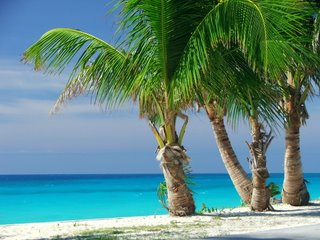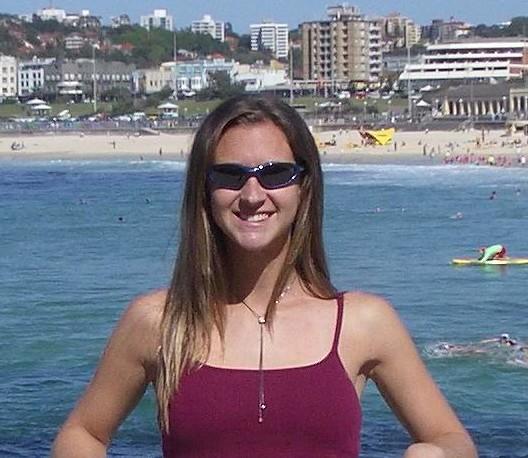A Workup

Most of the work at the Shark Lab has historically focused on the lemon shark, and over the years, standard procedures for taking data when one is caught have been developed. Some of the ways the sharks are caught include gill netting, long-lining and old-fashioned rod and reel. What follows is a description of how juveniles are "worked up".
 Let's say, for example, a few juveniles are needed for observation. First we might set a gillnet perpendicular to the shore by tying one end to the mangroves and the other to a rebar stake. When a shark is caught and we intend to temporarily keep it in a pen behind the lab, it is placed in a "transport box" and driven over to the pen. We can then go back to the pen at any time to start a workup.
Let's say, for example, a few juveniles are needed for observation. First we might set a gillnet perpendicular to the shore by tying one end to the mangroves and the other to a rebar stake. When a shark is caught and we intend to temporarily keep it in a pen behind the lab, it is placed in a "transport box" and driven over to the pen. We can then go back to the pen at any time to start a workup.For a workup, we drive one of the Carolina Skiffs out to the pen (which is about
 chest-deep at high tide) and anchor up. On the boat we have dip nets, a scale, a measuring trough, PIT tags and PIT tag reader, and other equipment necessary for the workup. First, a dipnet is used to scoop up the shark in the pen. Someone will then reach into the net and hold the shark behind its head, in front of the first dorsal fin. The shark is held just under the surface of the water and walked over to the boat, where a measuring trough filled with water is waiting.
chest-deep at high tide) and anchor up. On the boat we have dip nets, a scale, a measuring trough, PIT tags and PIT tag reader, and other equipment necessary for the workup. First, a dipnet is used to scoop up the shark in the pen. Someone will then reach into the net and hold the shark behind its head, in front of the first dorsal fin. The shark is held just under the surface of the water and walked over to the boat, where a measuring trough filled with water is waiting. The trough, a PVC pipe sliced lengthwise in half, has a ruler along the bottom. Three measurements are recorded: precaudal lenth (PCL), fork length (FL) and total length (TL). PCL is measured from the tip of the nose to the notch just before the shark's caudal (tail) fin; FL is measured from the tip of the nose to the fork in its tail; and TL from the tip of the nose to the tip of its tail.
The trough, a PVC pipe sliced lengthwise in half, has a ruler along the bottom. Three measurements are recorded: precaudal lenth (PCL), fork length (FL) and total length (TL). PCL is measured from the tip of the nose to the notch just before the shark's caudal (tail) fin; FL is measured from the tip of the nose to the fork in its tail; and TL from the tip of the nose to the tip of its tail.A PIT tag reader is waved in the vicinity of the first dorsal fin, where PIT tags are always implanted. If the shark has been caught and tagged before, the reader beeps and displays a number. This number is recorded, and all of the data will be entered into its already-existing section of a master database. If there is no beep, a new PIT tag is implanted. To do this, a tiny incision is made with a scalpel just below the base of the first dorsal fin. A syringe is loaded with a PIT tag, and it is injected into the incision. The number of the tag is recorded, and the shark will be added to the database.

It may be necessary to take a DNA sample from the shark. There are several ways to take a sample, and the most common ways are by clipping the corner off of a fin with scissors or by using a small hole-punch in its tail fin.
 The status of the umbilical scar is noted by turning the shark over and seeing if it is open (a newborn), just closed (a little older) or closed. The sex of the shark is also recorded (males have two claspers).
The status of the umbilical scar is noted by turning the shark over and seeing if it is open (a newborn), just closed (a little older) or closed. The sex of the shark is also recorded (males have two claspers).The sharks are weighed using a hand-held scale. One

person holds the scale while another lifts the shark out of the measuring trough and places it in the scale trough.
Finally, observations are made about the condition of the shark: stress (there are signs such as white gills), fin rot (very common - tips of fins look discolored and/or tattered), any scars or other distinguishing characteristics, etc.
Once all measurements have been made, the shark is either walked back to the pen or released, depending on what needs are. All of the data is recorded in a standard format in log books and later added to the master database at the lab. It's through careful measurements like these that things like growth rates have been able to be calculated. If you catch a shark one day and measure it, then you catch the same shark again a year later, you know exactly how much it has grown in one year. Multiply this by the incredible number of sharks in the database, and you have a great snapshot of the overall population.






